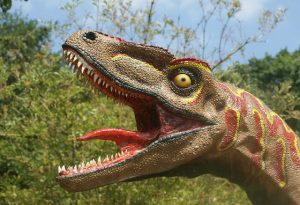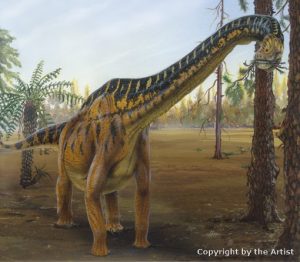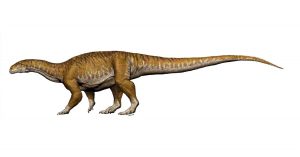Since my last post (11July18) was a review of the new dinosaur movie Jurassic World: Fallen Kingdom I thought this might be a good time to discuss several items of interest in the field of paleontology. Since T-rex is one of the heroes of the Jurassic Park franchise, well at least to me, I’ll start with a recent discover about them.
The word dinosaur itself means ‘terrible lizard’ and the first scientists who studied their fossil bones did actually think of them as simply enormous lizards. Over the last two hundred years we’ve learned a great deal about just how different dinosaurs are from other types of reptiles and now a new study takes us another step further by examining dinosaur’s tongues.
Most representations of dinosaurs, including those in Jurassic Park, show dinosaurs as having tongues similar to those of lizards, long, only attached at the back and therefore able to stick out, pretty much the way ours do, see image below.

According to Julia Clarke, professor of vertebrate paleontology at the University of Texas at Austin and co-author of the study however dinosaurs probably had a tongue more like those of the crocodiles and alligators. A tongue that was firmly attached to the bottom of the mouth along its entire length and one would be completely unable to stick outside of the mouth, see image below.

Since the soft parts of dinosaurs, such as tongues rarely survive the study based the study’s conclusions are based on an examination of the bones in the mouths of dinosaurs, in particular the hyoid bones that anchor and support the tongue. What the researchers found was that the short hyoid bones of dinosaurs more closely resembled the hyoid bones of the crocodilians rather than the hyoid bones of the lizards. So it turns out that we may have still been incorrectly thinking of dinosaurs as just big lizards.
One of the best known types of dinosaurs are the huge sauropods, the long necked, long tailed behemoths who were without doubt the largest animals ever to walk on Earth. Our modern whales may be as large but of course they swim in the ocean. See image of a brachiosaurus below.

Now paleontologists working in Argentina have unearthed what they consider to be earliest known member of the sauropod group, and animal that they have named Ingentia prima. As might be expected for a very early member of a group I. prima looks a good bit different, see image below.

Comparing I. Prima to the brachiosaurus it’s easy to see that I. prima’s neck is a good bit shorter and while the legs of the brachiosaurus strongly resemble those of an elephant the legs of I. prima look more like those of theropod dinosaurs. To me the rear legs look a bit like the legs of T-rex.
I. prima lived during the Triassic period, about 215 million years ago, not long after the very first recognizable dinosaur evolved. While smaller than its later descents at an estimated ten tons and nearly ten meters in length I. prima was probably the biggest creature in the world at that time.
Paleontologists have long known that the huge sauropods evolved from much smaller, two legged dinosaurs and I. prima still shows some evidence of that two legged past. Researchers hope that further study of I. prima’s bones will give them further insight into how the sauropod group of dinosaurs evolved.
These studies are just two more examples of how, piece by piece, paleontologists are filling in the gaps in our knowledge of the history of life on Earth.
